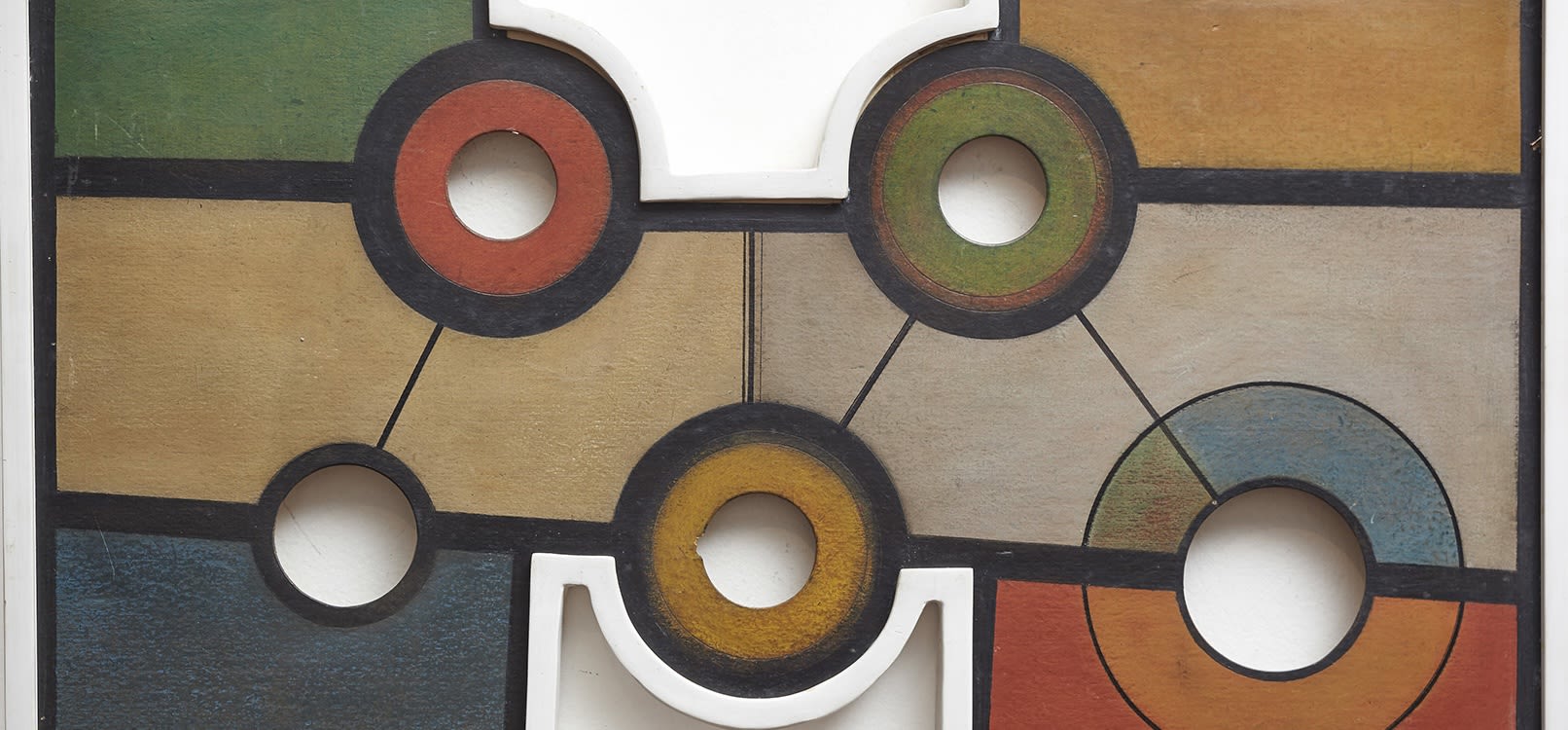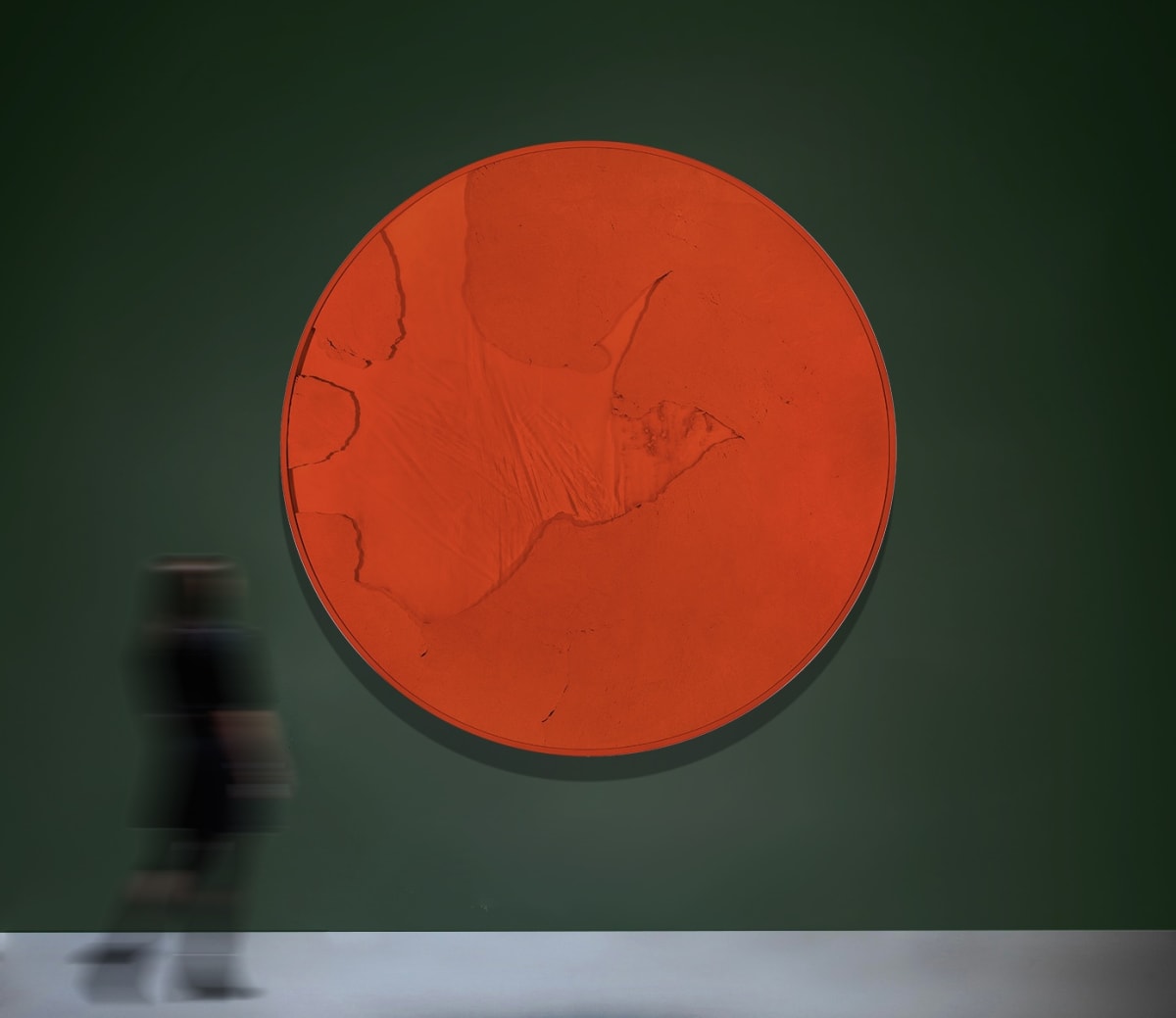Uruguay, 1913-2010
Biography
Arden Quin was born in 1913 in Rivera Uruguay, a town on the Brazilian border. He had an uncle who painted cubist paintings, and in 1934 in Rivera Arden Quin created his first surviving painting, “Naturel Morte Cubiste” or “Cubist Still Life.”
In Montevideo twenty-one year old Arden Quin met his mentor, the artist Joaquin Torres-Garcia, then in his sixties. Torres-Garcia had just returned from Europe where he had been influenced by Piet Mondrian and Michel Seufor: Torres-Garcia and Seufor formed the Cercle et Carre group, which included Mondrian and Vantongerloo and was dedicated to geometric and constructivist art. In Montevideo Arden Quin studied under Torres-Garcia and was influenced by his transformable and articulated sculpture pieces.
During the 1940’s Arden Quin joined intellectual writers and artists in Buenos Aires. In 1944, after working on it for several years, he brought out the literary and artistic journal Arturo, in which he applied dialectic materialism of art. He also contributed his prose poem Pegasus Eats Grass in Chaos, which refers (secretly due to censorship) to the horrors of World War II. In August of 1946 Arden Quin read to the public the MADI Manifesto, which he had written, and which launched the MADI movement. He began experimenting with curved wood, alternating convex and concave forms, which he called “fome galbee” and irregular shapes, as seen in EXA.
By late 1946 Arden Quin was in Paris , turning out work after work in his new shapes and curves. He experimented with many different color combinations and also made wooden movable pieces.
In the 1950’s he created mobiles and works on highly polished enameled wood he called plastiqu blanche. Examples of this technique may be seen in Volf Roitman’s work from the 1950’s on the blue island in the center of the museum. This was a very tedious process, since each application had to dry before another was applied, in order to reach the polished surface.
In the 1950’s Arden Quin’s works were shown at the Salon des Realities in Paris, and then he returned to Buenos Aires where he launched the Associacion Arte Nuevo. The first major retrospective of his work was shown at Alexandre LaSalle’s Saint-Paul-de-Vence gallery.
In the 1960’s he produced mobiles, and in the 1970’s he continued his experiments with the “H” form and now curved his work surface in two directions. In the 1980’s he did many coplanals, which involved more than one piece of work of art, sometimes attached, sometimes not, and sometimes movable. Italia is an example of this.
In the 1990’s Arden Quin was included in the MOMA exhibit of “Latin American Artists of the twentieth Century” and was named on the 50 most important artists of our time by an international critic review board assembled to select art for the Olympics in Seoul and Barcelona.
Works
Off-Site
Join our mailing list
* denotes required fields
We will process the personal data you have supplied to communicate with you in accordance with our Privacy Policy. You can unsubscribe or change your preferences at any time by clicking the link in our emails.




